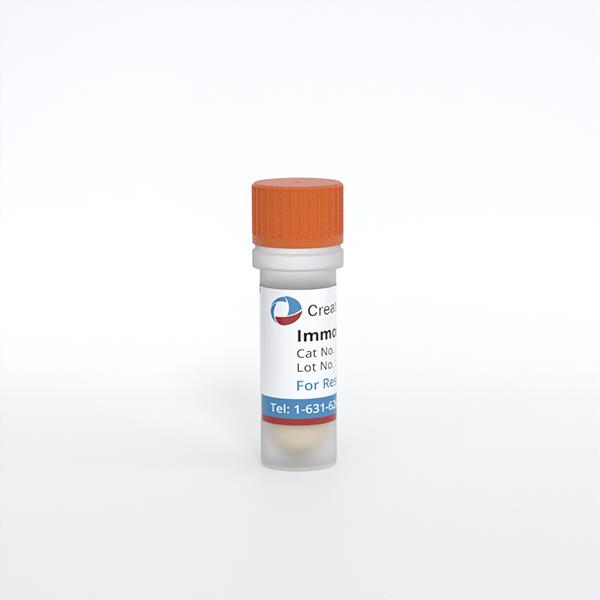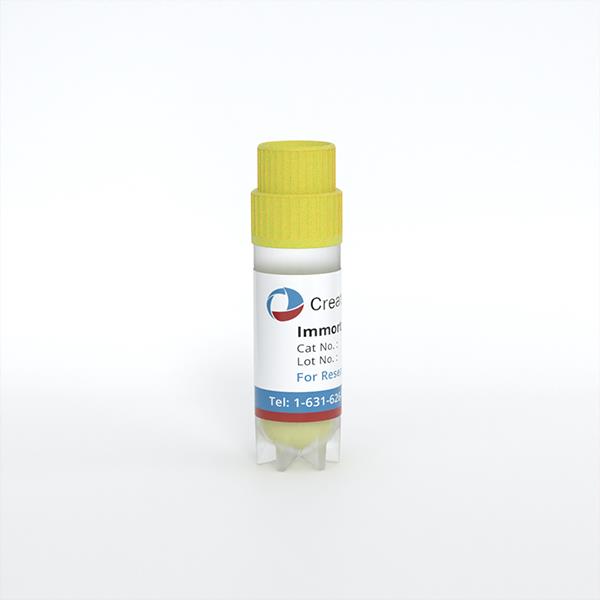
Immortalized Mouse Embryonic Hepatic Progenitor Cells (iHP)
Cat.No.: CSC-I9223L
Species: Mus musculus
Source: Liver
Morphology: Polygonal
Culture Properties: Adherent
- Specification
- Q & A
- Customer Review
Cat.No.
CSC-I9223L
Description
The Immortalized Mouse Embryonic Hepatic Progenitor Cells are non-tumorigenic, hygromycin-resistant, reversibly immortalized cells that expresses endothelial (CD34), progenitor (Pou5f1/Oct4), and hepatic (AFP, Dlk, Alb) cell markers. The cells are programmed for liver-specific gene expression and differentiation, as indicated by the presence of hepatic/pancreatic transcriptions factors (i.e. HNF3/Foxa1, HNF3β/Foxa2, and HNF4α/MODY1) that are involved in mouse liver development. Indocyanine green (ICG) uptake and glycogen storage functions has also been observed in these cells.The cells are unique as the immortalization process may be reversed by removing SV40 large T antigen expression via transduction with recombinant adenovirus expressing Cre recombinase, resulting in primary hepatic progenitor cells. Both immortalized and primary forms of the hepatic progenitor may undergo differentiationin vitrowhen cultured with dexamethasone, developing mature hepatocytes which express hepatic cell markers (i.e. CK18, TAT, and ApoB). It is recommended to use these cells for studies in liver stem cell, liver organogenesis, and hepatocytes transplant therapy.
Species
Mus musculus
Source
Liver
Culture Properties
Adherent
Morphology
Polygonal
Immortalization Method
Serial passaging and transduction with retrovirus SSR#69 expressing SV40 large T antigen flanked with Cre/loxP sites
Markers
CD34, Pou4f1/Oct4, AFP, Dlk, Alb
Application
For Research Use Only
Storage
Directly and immediately transfer cells from dry ice to liquid nitrogen upon receiving and keep the cells in liquid nitrogen until cell culture needed for experiments.
Note: Never can cells be kept at -20 °C.
Note: Never can cells be kept at -20 °C.
Shipping
Dry Ice.
Recommended Products
CIK-HT003 HT® Lenti-SV40T Immortalization Kit
Quality Control
1) qPCR to examine expression of cell markers;
2) Western blot analysis for SV40 large T antigen;
3) Indocyanine green (ICG) uptake and release assay and periodic acid-schiff (PAS) staining were performed to determine cell functions.
2) Western blot analysis for SV40 large T antigen;
3) Indocyanine green (ICG) uptake and release assay and periodic acid-schiff (PAS) staining were performed to determine cell functions.
BioSafety Level
II
Citation Guidance
If you use this products in your scientific publication, it should be cited in the publication as: Creative Bioarray cat no.
If your paper has been published, please click here
to submit the PubMed ID of your paper to get a coupon.
Ask a Question
Write your own review
Related Products
Featured Products
- Adipose Tissue-Derived Stem Cells
- Human Neurons
- Mouse Probe
- Whole Chromosome Painting Probes
- Hepatic Cells
- Renal Cells
- In Vitro ADME Kits
- Tissue Microarray
- Tissue Blocks
- Tissue Sections
- FFPE Cell Pellet
- Probe
- Centromere Probes
- Telomere Probes
- Satellite Enumeration Probes
- Subtelomere Specific Probes
- Bacterial Probes
- ISH/FISH Probes
- Exosome Isolation Kit
- Human Adult Stem Cells
- Mouse Stem Cells
- iPSCs
- Mouse Embryonic Stem Cells
- iPSC Differentiation Kits
- Mesenchymal Stem Cells
- Immortalized Human Cells
- Immortalized Murine Cells
- Cell Immortalization Kit
- Adipose Cells
- Cardiac Cells
- Dermal Cells
- Epidermal Cells
- Peripheral Blood Mononuclear Cells
- Umbilical Cord Cells
- Monkey Primary Cells
- Mouse Primary Cells
- Breast Tumor Cells
- Colorectal Tumor Cells
- Esophageal Tumor Cells
- Lung Tumor Cells
- Leukemia/Lymphoma/Myeloma Cells
- Ovarian Tumor Cells
- Pancreatic Tumor Cells
- Mouse Tumor Cells
Hot Products
